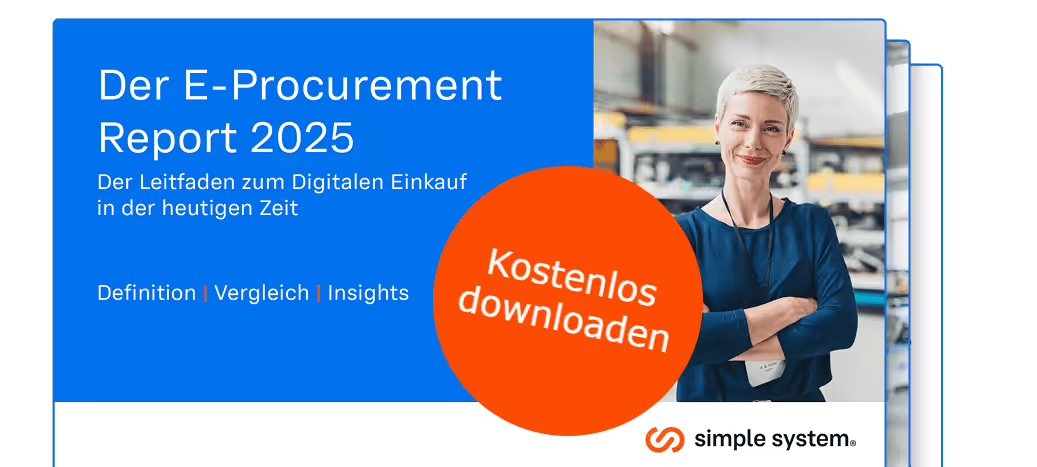Public procurement ensures the supply of government institutions and is subject to strict regulations. It differs from private procurement in terms of transparency, defined procurement procedures and the common good as a goal. Digital systems optimize processes, reduce costs and increase efficiency. There are challenges in decentralization, compliance, and sustainability.
Procurement Administration: Principles and Processes for Public Procurement
Procurement and administration are truly at the heart of every organization — without them, many operations would come to a standstill. These core business processes ensure that all required resources are available at the right time and in the right place. From strategic planning in the office to operational implementation in warehouses and production facilities, procurement processes aim to reduce costs and keep operations running smoothly.
What is procurement?
All activities related to the provision of products and services are collectively referred to as ”sourcing“. This includes determining requirements, selecting suppliers, and ordering the necessary goods and services. A distinction is made between public and private procurement:
- Public procurement covers all purchases in the public sector.
- Private procurement refers to acquisitions made by private companies.
Authorities at the federal, state, and municipal levels use procurement to acquire goods and services. Contracts for the public sector are awarded to private companies through strictly regulated procurement processes.
Note: The awarding of contracts is not a separate part of sourcing but is an important process to ensure transparency, fairness, and efficiency in the use of public funds.
What is administration in procurement?
Administration is a key part of sourcing. It covers all organizational aspects and documents every order and invoice. In addition, procurement administration manages suppliers (supply chain management) and ensures that all steps are traceable. Effective administration enables the smooth execution of procurement strategies.
Procurement administration also plays an essential role in optimizing a company’s value chain. It creates a transparent supplier base, enabling companies to compare potential suppliers and conduct strategic planning. By implementing modern administration systems, companies can automate purchasing processes in a targeted way, thereby increasing profitability.
Importance of public procurement in Germany

Public procurement represents a critical economic driver. It accounts for a significant share of the economy and ensures fair, transparent competition, thereby fostering citizens’ trust in state institutions. Public procurement is also essential for infrastructure and public services in Germany, covering areas such as construction projects, schools, hospitals, and more. Moreover, it creates an open market for companies — further reinforcing fair competition.
Comparing public and private procurement
Public and private procurement differ in several key aspects. The most important distinguishing criteria include:

The primary goal of public sector procurement is the common good. Private companies, on the other hand, are focused on maximizing profits. Public procurement must therefore not only be economically viable but also have a positive impact on society. It must be perceived by the public as “clean” and trustworthy.
Furthermore, the public procurement process is strictly regulated and subject to numerous legal requirements. Private procurement is generally more flexible, as private companies are bound by fewer and less stringent regulations.
A high level of transparency in public procurement helps prevent corruption and arbitrariness in awarding contracts. In contrast, private procurement processes may be less transparent.
Public procurement often involves lengthy procedures with different process types, such as open procedures, restricted procedures, negotiated procedures, competitive dialogue, and innovation partnerships. By comparison, private procurement allows for faster processing since it is not bound by these formal methods.
The role of digital systems in procurement and administration
The targeted use of digital systems can significantly improve procurement and administration outcomes. They automate routine tasks, increase transparency, and greatly simplify supplier management. Specialized platforms optimize purchasing processes, save both costs and time, and boost efficiency.
One example of such a digital solution is simple system. The platform enables companies to optimize their purchasing processes and maintain full visibility over all activities. With access to over 850 suppliers and 80 million available items, simple system reduces manual effort in order entry, post-processing, goods receipt, and invoice verification. It also offers seamless SAP integration, contributing to the sustainable optimization of procurement processes.
Procurement facts about increasing efficiency through digitization

Thanks to the era of digitization, companies benefit from attractive cost savings, shorter processing times, and greater transparency. By implementing digital systems in a targeted manner, businesses can boost both profitability and competitiveness — a clear advantage in an ever-changing market. AI-powered systems also enable more accurate forecasting of risks and market trends, giving companies unprecedented planning security and strategic flexibility.
How does the public procurement process work?

The public procurement process goes through several stages. The process ensures that public institutions in states and municipalities purchase their goods and services efficiently and cost-effectively.
Steps in the procurement process

The main steps in the procurement process:
- Needs assessment – Determining what is required
- Tendering – Public announcement of the procurement opportunity
- Offer evaluation – Reviewing proposals for cost-effectiveness and compliance
- Award – Selecting the best possible provider
- Contracting – Defining the contract terms and conditions
- Performance monitoring – Conducting quality control and verifying contractually agreed services
- Completion and archiving – Documenting the process for future reference
The public sector faces diverse and complex challenges. The procurement process is influenced by legal, economic, and organizational factors, which can complicate efficient and transparent implementation. Recent studies from 2024 show that Germany is still far from achieving fully sustainable procurement practices.
A particular hurdle is the devolution of purchasing responsibilities within specific departments. While this can potentially enable more efficient procurement processes, it also carries the risk of reduced transparency. Compliance issues are also conceivable. Decentralized procurement teams may struggle to share best practices and adhere to corporate policies. Furthermore, decentralized purchasing can lead to higher costs, disorganized data management, and inefficient spending control.
Synopsis
Public procurement processes are complex but essential for the functioning of our society. Clearly structured procedures and the digitization of strategic procurement can help overcome these challenges effectively.
What are the most common questions about procurement?
How long does the entire procurement process take?
The duration of individual procurement processes varies significantly. Simple procurements can be completed in just a few weeks, while more complex projects may take several months.
Are there any special regulations for awarding contracts abroad?
Yes. International procurement is generally subject to additional regulations and trade agreements.
What are the obligations of contracting authorities in procurement?
Contracting authorities must adhere to strict public procurement regulations. They are required to ensure transparency, equal treatment, and cost-effectiveness — factors that can often make the procurement process more challenging.

Einkaufen & sparen
Erfahren Sie, wie es geht, in unserem kostenlosen E-Procurement-Report. Jetzt kostenlos und unverbindlich herunterladen.
Jetzt lesen








